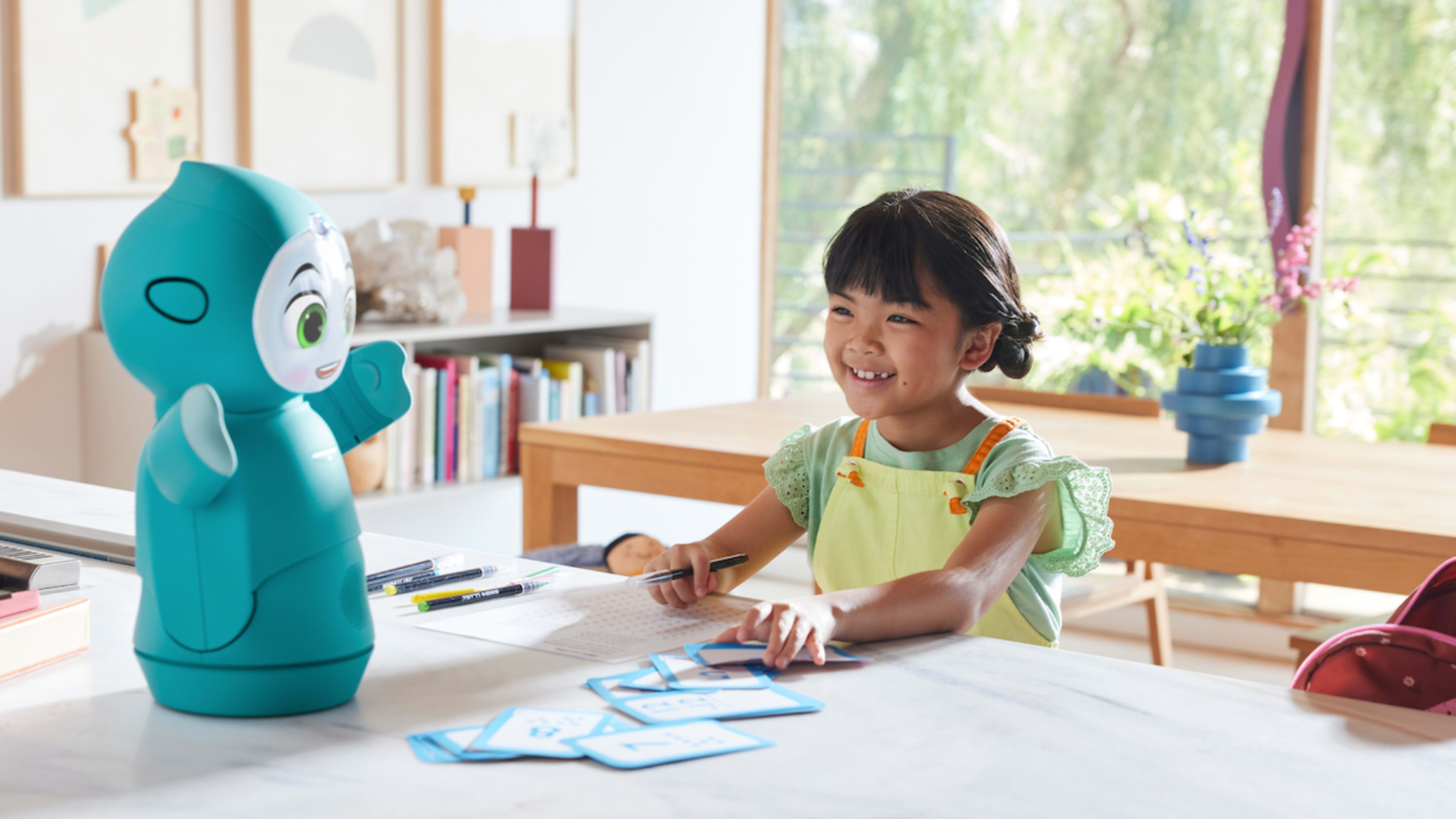Moxie, a playful robot that first got attention for helping kids with loneliness and anxiety through the COVID-19 pandemic, is getting an AI upgrade and picking up some tutoring skills.
The tabletop bot from AI company Embodied makes eye contact and carries on audio conversations with kids and was initially focused on helping children meet social and emotional milestones. Later this year, it’s gaining the ability to engage kids on reading, math, science, and social studies, offering guidance and, says Embodied founder and CEO Paolo Pirjanian, “all the patience in the world” as its users pick up new skills and knowledge.
“It’s not necessarily only for children that are doing really well in school,” he says. “Particularly, it’s for children that are left behind in school—children that are having a hard time following in a classroom for whatever reason there may be.”

Moxie, which retails for $799, is also receiving some other AI upgrades, unveiled Tuesday at the CES. The bots can now recognize up to four children in a family, and soon, says Pirjanian, will be able to recognize other important objects in kids’ lives, like favorite stuffed animals. (For privacy’s sake, video is processed on the bot itself, according to Embodied, and audio gets stripped of personal information.)
In a demo for Fast Company, Moxie guided Pirjanian through an arithmetic problem by instructing him to conceive of multiplication as repeated addition. When Pirjanian arrived at the correct answer, the bot responded encouragingly and told a longer story based on the problem. Positive reinforcement is generally set to be part of the tutoring experience: As users meet learning goals, they’ll be rewarded with the ability to customize the hair, eyes, and sunglasses displayed on Moxie’s face, which appears on a screen on the roughly foot-tall robots.
The tutoring features are likely to require a subscription, expected to cost about $10 or $12 through an annual plan, Pirjanian says.
View this post on Instagram
A new app will also let kids talk to Moxie through a FaceTime-style conversation when they’re away from the bot itself. At the moment, says Pirjanian, kids generally interact with Moxie at home. And adults will also be able to use parent-facing app features to track kids’ progress and suggest topics for Moxie to practice with kids, though children are also always able to suggest a topic to explore.
“The child can proactively say I want to learn about art or I want to learn about history,” says Pirjanian, or they can practice reading to Moxie from a selection of books on which the robot is trained. The bot can play sound effects as children read from the book or describe the pictures and discuss the plot when kids are done.
In general, Moxie is also getting upgrades to its memory, making the bot better able to pick up conversations where they left off, enhanced large language model-powered conversational skills, and improved speech recognition. (In the math demo, the bot appeared at one point confused by Pirjanian’s answer to a multiplication problem, though it recovered quickly when he repeated the number).
View this post on Instagram
The enhanced AI will be of benefit to kids who, Pirjanian says, often set their expectations high for the robot’s level of understanding and behavior due to its lifelike appearance.
“The fact that children almost immediately take to Moxie and believe it to be a living being sets expectations through the roof, because then a child thinks Moxie can do anything a human can do, and that is a very, very high bar,” he says. “We will not be able to close that gap in the foreseeable future but, of course, we are relentlessly working on trying to close that gap.”
Recognize your brand’s excellence by applying to this year’s Brands That Matter Awards before the final deadline, June 7.
Sign up for Brands That Matter notifications here.
